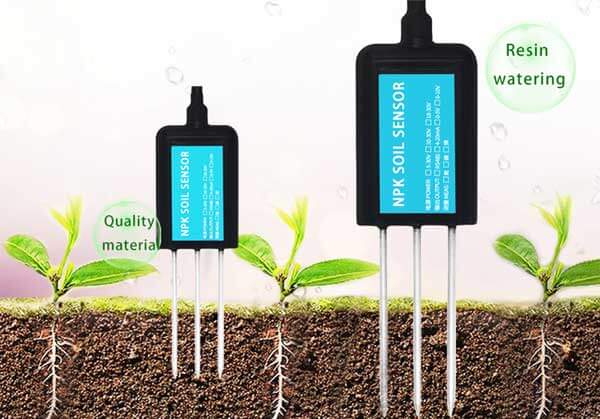Agriculture is an essential part of human life, providing food for millions of people around the world. As the global population continues to grow, so does the need for increased agricultural productivity. However, traditional farming methods are no longer sufficient to meet these demands. New technologies, such as soil sensors, are emerging to help farmers optimize their crop production and meet the needs of a growing population.
Soil sensors are devices that are used to monitor various soil conditions,
such as moisture content, temperature, and nutrient levels. They are typically installed in the soil at specific depths and can be connected to a central monitoring system that provides real-time data on soil conditions. This technology has revolutionized the agricultural industry by offering farmers a more precise way to manage their crops.

One of the main benefits of soil sensors is their ability to measure soil moisture levels. Plants require a certain amount of water to grow and produce crops, but too much or too little water can be detrimental to plant growth. Soil sensors can help farmers determine when plants need watering, thus preventing over- or under-watering. This not only saves water but also improves crop yields and reduces the risk of disease.
Another important application of soil sensors is in nutrient management
Different crops require different amounts of nutrients to grow properly, and soil sensors can help farmers determine the nutrient levels in the soil, allowing them to adjust fertilizer application accordingly. This helps to optimize crop growth and reduce the amount of excess fertilizer that enters the environment, which can be harmful to both humans and wildlife.
Soil sensors also offer farmers a more precise way to manage crop growth
By monitoring soil conditions in real-time, farmers can adjust irrigation rates, fertilizer application, and other variables to optimize crop growth and improve yields. This precision farming approach has been shown to increase crop yields while reducing water and fertilizer usage.
In addition to precision farming
soil sensors have also been used to monitor soil health and detect soil-borne diseases. Certain soil conditions can contribute to the growth of harmful microorganisms, which can damage crops and reduce yields. Soil sensors can help farmers detect these conditions early, allowing them to take action before the disease spreads. This not only improves crop yields but also reduces the need for harmful chemicals and pesticides.
Overall, soil sensors represent a major breakthrough in agriculture technology
They offer farmers a more precise way to manage their crops, reducing waste and improving yields. As the global population continues to grow and the demand for food increases, technologies like soil sensors will play an increasingly important role in ensuring that we can feed the world’s population in a sustainable way.
However, there are still some challenges to be overcome in the adoption of soil sensor technology. One major obstacle is the cost of the technology, which can be prohibitive for many small-scale farmers. Additionally, there is a need for more research into the long-term effects of soil sensor usage on soil health and the environment. Despite these challenges, the potential benefits of soil sensors are clear, and we can expect to see continued growth in this technology in the coming years.

In conclusion, soil sensors have revolutionized the agricultural industry by providing farmers with a more precise way to manage their crops. By monitoring soil conditions in real-time, farmers can optimize crop growth, reduce waste, and improve yields. As the world’s population continues to grow, technologies like soil sensors will become increasingly important in meeting the demand for food in a sustainable way. With continued research and development, we can expect to see even more innovative uses of soil sensors in the future. Digging deep into the soil with soil sensors is just the beginning of a new era in agriculture.
